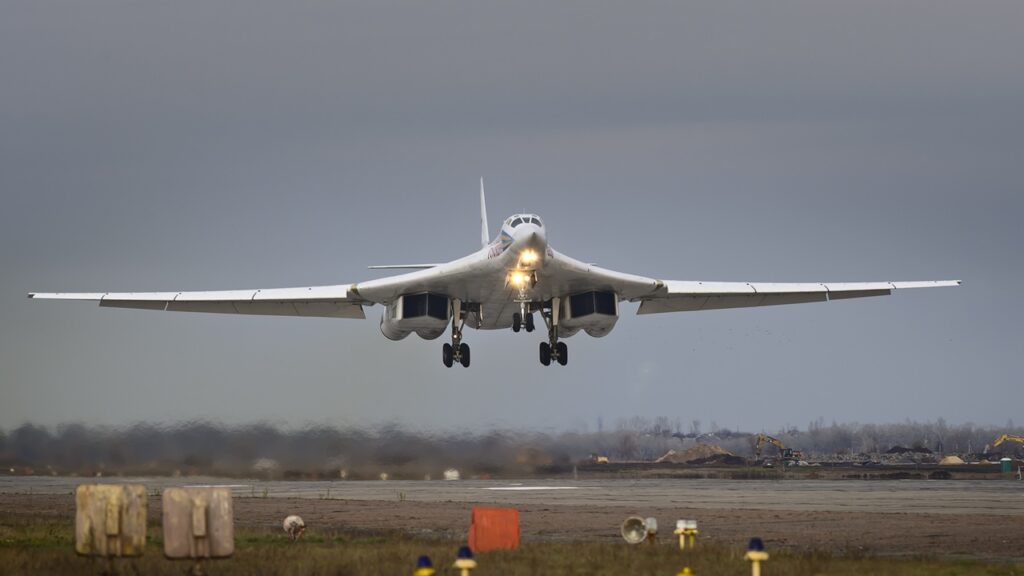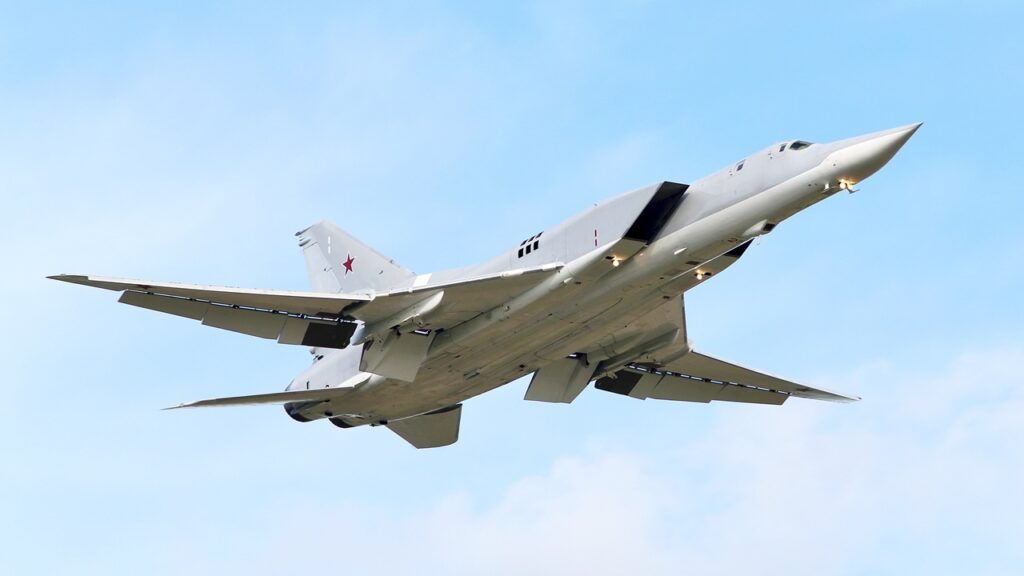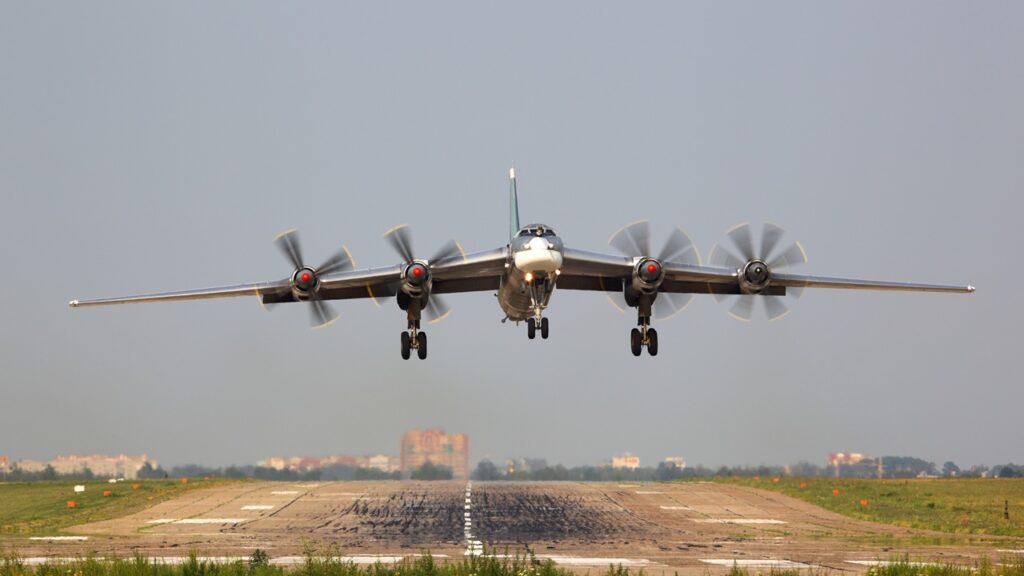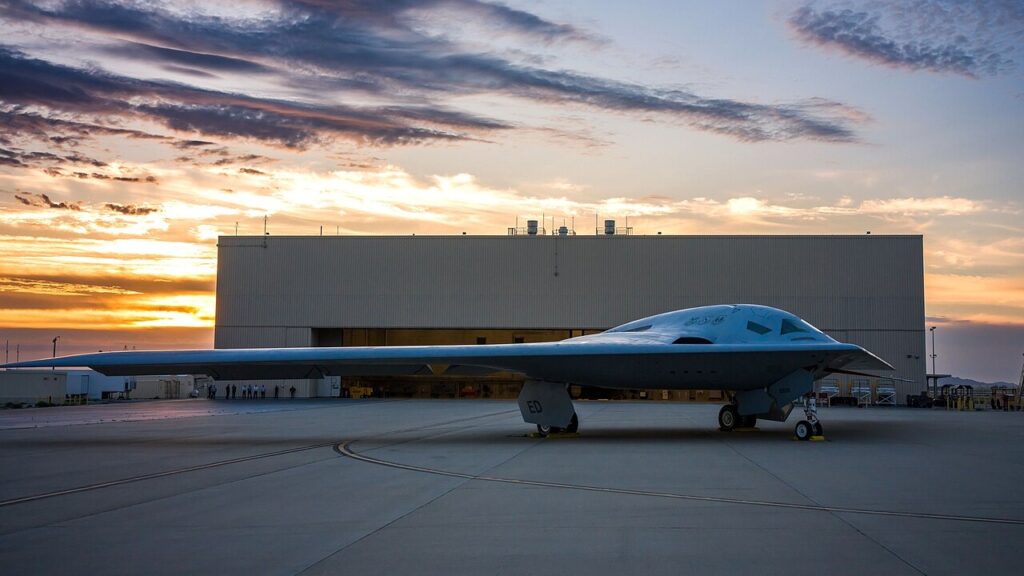Russia has three main strategic bombers—all of which suffered losses from Ukraine’s daring “Operation Spiderweb” attack on Sunday.
Operation Spiderweb, the daring Ukrainian drone attack targeting Russian strategic bombers deep within Russian territory, has raised awareness for the components of the Russian bomber fleet. Here is a quick rundown of every aircraft in the Russian military designed to execute bomber missions.
Tupolev Tu-160

Known to NATO as the “Blackjack,” the Tu-160 is a supersonic strategic heavy bomber that was first introduced in 1989, immediately before the fall of the Soviet Union. Of the 35 Blackjacks ever built, only 20 remain in service—all of which are currently being upgraded to the Tu-160M2 standard.
The Blackjack is the most advanced and powerful strategic bomber in the Russian inventory. Known for its four engines and variable-sweep wings, the Blackjack also weighs in as the heaviest supersonic combat aircraft in the world. Capable of achieving Mach 2.05 (around 1,520 mph), the Blackjack is a vital component of Russian nuclear deterrence. No Blackjacks are known to have been destroyed during Operation Spiderweb.
Tupolev Tu-22M3

Known to NATO as the “Backfire-C,” the Tu-22M3 is a long-range, supersonic bomber used primarily for strike, maritime, and nuclear delivery roles. The Backfire is versatile and widely used within the Russian military. First flown in 1977, the Backfire can reach speeds of Mach 1.88 and a service ceiling of 43,000 feet. The Backfire features variable swept wings and twin engines. To assist with high precision strikes, the Backfire was outfitted with advanced radar and navigation systems. And to assist with high speed, low altitude penetration missions, the Backfire was built with a particularly durable airframe.
At least four Tu-22M3 bombers were destroyed during the portion of Operation Spiderweb that targeted the Belaya air base in Irkutsk Oblast, deep within the Russian border.
Tupolev Tu-95

Known to NATO as the “Bear,” the Tu-95 is an icon of the Cold War. A cornerstone of the Russian/Soviet nuclear triad for over six decades, the Bear is the oldest active bomber design in the world still flying—edging out the Boeing B-52 Stratofortress.
The Tu-95 first flew in 1952, less than half a century after the Wright Brothers flew at Kitty Hawk, but is still relevant today. Operating with a crew of seven, the Tu-95 relies upon four NK-12 turboprop engines with contra-rotating propellers. The NK-12 is the most powerful turboprop engine ever built. Notably, its propeller is unusually loud—meaning the Bear is typically heard long before it is seen. At least one Tu-95 bomber was destroyed at Belaya.
PAK-DA (Under Construction)

Russia’s next strategic bomber doesn’t exist yet, but is under development; the “PAK-DA,” short for “Prospective Aviation Complex for Long-Range Aviation.”
The PAK-DA is anticipated to serve as the backbone of Russia’s future strategic bomber fleet. Prioritizing stealth, survivability, and stand-off weapon delivery, the PAK-DA is expected to be able to deliver both nuclear and conventional ordnance. Serial production is expected to begin sometime in the 2030s—and the project was initially thought to be largely moribund due to Russia’s demand for more pressing munitions for the ongoing war in Ukraine. But that timeline may need to be condensed based on the losses Russia sustained during Operation Spiderweb.
About the Author: Harrison Kass
Harrison Kass is a defense and national security writer with over 1,000 total pieces on issues involving global affairs. An attorney, pilot, guitarist, and minor pro hockey player, Harrison joined the US Air Force as a Pilot Trainee but was medically discharged. Harrison holds a BA from Lake Forest College, a JD from the University of Oregon, and an MA from New York University. Harrison listens to Dokken.
Image: Shutterstock / staras.

















